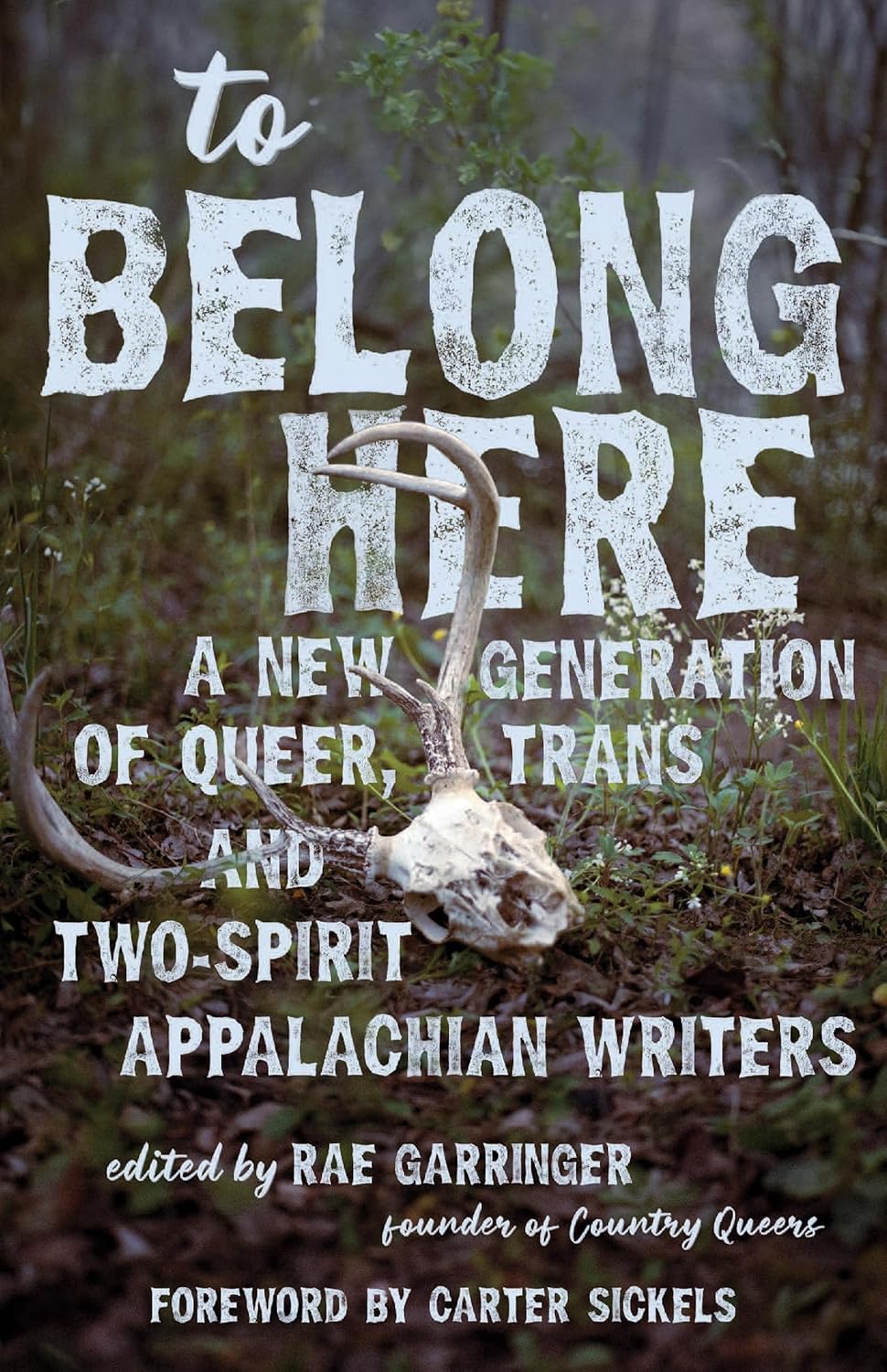Review of To Belong Here: A New Generation of Queer, Trans, and Two-Spirit Appalachian Writers edited by Rae Garringer

To Belong Here: A New Generation of Queer, Trans, and Two-Spirit Appalachian Writers
Edited by Rae Garringer
The University Press of Kentucky, 2025, 112 pages
$27.95
Reviewed by Allison Quinlan
Home is a complicated thing. For many queer folks from Appalachia, home is too often a place longed for, but which we know will never quite fully have us. This collection captures that tension well, and importantly amplifies the voices of Black, Indigenous, and other marginalised peoples in the collection of essays and poetry. Living in spaces that don’t always love you back means that too many queer people move through the world braced for violence.
The collection gets right into the gut punch of what survival looks like with “What You Should Know Before You Kill Me” by Brandon Sun Eagle Jent (2-3). Jent writes, “This body is but a wave in the ocean of me,” (2) an assertion that queer existence is something larger than the physical body, and not easily erased. Rayna Momen’s “They Say All Kinds Are Welcome Here” lays bare the reality for so many, particularly people of colour in these spaces: “yet these [country] roads to prosperity / are full of [shit] potholes and bigotry” (4). The collection definitely doesn’t ease you in—you understand the nuances of the author’s lived experience before you finish the first essay.
Lucien Darjeun Meadows continues the conversation, “And I can never ‘go home,’ not really, not completely, ever again” (12). So, the work presents a question to the reader: Where exactly do you go and what do you do when home is both a longing and a loss? What I left with is that it’s up to us to carve out a space and fight for a place to be. I understand that this should inspire in some ways, but reading this during the current political climate in the United States left me feeling a little disheartened at the reality that we’ll seemingly always have to fight just to be.
Every piece in the collection speaks to those questions of longing and belonging. hermelinda cortés writes about being Mexican-American in a space that doesn’t “claim” her and her choice to stay, rooted by something deeper than belonging in a traditional sense. Likewise, Momen’s “Growing up Black in Appalachia / made me want to fight and to flee / left me internalized and empowered / to live a double life / like Affrilachians learn to do” (26) echoes the complexity of existence as a marginalized person in Appalachia. Garringer also acknowledges the difficulty in addressing these questions of identity and belonging: “This, too, is a part of the place I call home. And not talking about these horrific truths is a way of protecting them, condoning them, even” (46).
It’s hard not to feel sad reading the collection, but there are also lovely moments of love and hope—not naive hope—but the kind that we struggle for and progress towards, even if it still feels disheartening to fight for it constantly. Rosenthal’s segment, “A Queer Place Called Home” (63-70) was the most comforting read in the work. It offered a glimpse of a future for queer life and love in Appalachia. I suppose the collection answers the questions the authors raise by showing that home might not necessarily be someplace to return to, but instead something to create. D. Stump writes, “We find meaning in all the places meaning calls to us. We find home in all the places that invite us to sit at the table and eat” (82).
In the final pages, Jent returns, telling readers that “this world loves me too” (83-84). I finished To Belong Here feeling exhausted and a little sad, but mostly grateful for the book and the voices it holds—an undeniable proof that we’re here, creating and continuing.
Allison Quinlan now feels more conflicted about missing home. They are a nonprofit manager and teacher currently living in Scotland (originally from rural Georgia, United States).
"Empowerment comes from ideas."
― Charlene Carruthers
"Your silence will not protect you."
— Tourmaline
"Gender is the poetry each of us makes out of the language we are taught."
— Leila Raven


